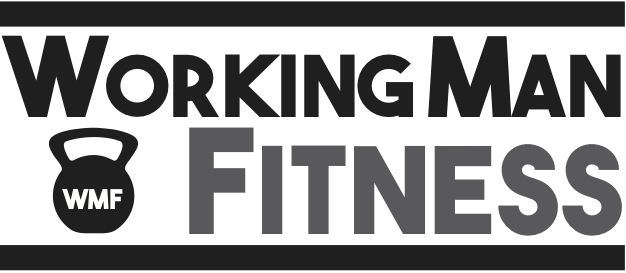 In How to feel Bruce Lee strong via Steve Justa Isometrics, I wrote about the benefits of isometric exercise. The benefits are great, and the feeling isos give your body is incredible. But how do you practice isos to get the full benefit? That’s the subject of this writing.
In How to feel Bruce Lee strong via Steve Justa Isometrics, I wrote about the benefits of isometric exercise. The benefits are great, and the feeling isos give your body is incredible. But how do you practice isos to get the full benefit? That’s the subject of this writing.
What are isometrics?
Isometrics are generally thought of as pushing or pulling against an immovable object. This is the common, yet incomplete, understanding of isometrics (referred to as isos throughout the remainder of this writing).
More broadly, isos are a static contraction where the muscle length does not change. That means that something as simple as doing a full-body contraction without moving is isometric.
It also means that many of your muscular contractions each day are isometric. So, why not incorporate some isometrics into your training?
Isometric Variables
Let’s consider some variables: amount of tension (a percentage of the full force you can muster), time (how long contractions are held), speed (how quickly you contract your muscles to full force), and position (which exercise you’re doing).
I mention these variables because “pushing or pulling against an immovable object” is a very limiting statement. There are a lot of ways to get variety and enjoyment out of an isometric program.
Using these variables in your program requires some attention to detail.
For percentage efforts, I use barbells loaded up with percentages of my max lifts. It’s not completely precise, but if a lift calls for 90% and I have 100% of my max on the bar and I’m just about to budge the weight, I know I can back off just a touch to be around the 90% effort mark.
For time, I use a metronome. You can download free apps for your smartphone. Set to 60 beats per minute and you can control how long your contraction is by listening to the beat. The video below shows an example of this.
An isometric Program
This writing refers to Steve Justa’s program as outlined in his book Rock, Iron, Steel. He calls for a seven day program with two rest days. The program is simple:
- Day 1: One exercise, 50 sets, 5 second hold, 80-90% power
- Day 2: 30-50 exercises, one 5-second hold each, 90% power
- Day 3: 20 exercises, 2 minute hold each, 40% power
- Day 4: 3 exercises, 100 half-second bursts (about 5 reps at a time to stave off fatigue), 90% power
- Day 7: 30 quarter block sprints, 6 hours later 2 mile run
Exercise Selection
For days 1, 3, and 4, you’ll want to pick from some big exercises. Day 1 I like doing the deadlift or squat. Day 3, I’ll do a deadlift, squat, bench press, row, curl, overhead press, etc. For this day, I’ll typically pick different angles in the movement, i.e. low squat, high squat, etc. Day 4 is all about big exercises: deadlift, squat, press. The press should be alternated with a pull on a weekly basis.
Day 2 is where you think, “How the hell am I going to do 50 different exercises?” Well, you’ll be surprised—with isos, the only limit is your creativity. Here are a few examples:
- Bar breaks – try to break the bar with two hands (hint: you won’t!)
- Various lockout positions in major exercises – deadlifts, squats, bench presses, military presses, pull ups, rows
- Randoms – push against a door frame, try to pull apart barbell plates, pinch barbell plates with each of your fingers, curls, reverse curls, french press, hip raise, bear hugs (on heavy bag or tree)
Day 7 is something you will need to build up to. If you haven’t sprinted in a long time, 30 quarter block sprints will destroy you. Try 5 to start out and add 2-3 each week.
This program has a lot of power in it. It is a bit tedious, but boredom and tedium are things we need to embrace. We can’t constantly change or we will never make progress. Contrary to muscle confusion, what we need is nervous system education–and trying to confuse your muscles runs contrary to educating your nervous system.
Give this program a try. Isos are excellent body awareness developers and they are a fun diversion from standard lifting.
Incorporating Isometrics in an Isotonic World
Isometrics don’t hold the attention as well as exercise with free weights does. The program above is beneficial because it’ll help you learn the effect isos have on your body—but long term, you probably won’t want to follow an isometric program to the exclusion of isotonic exercise. The solution is simple, incorporate an isometric exercise or two in each workout session.
If you are struggling at the sticking point in a lift, performing an isometric contraction can help you lift the weight. If you want to train a lockout position, isometrics can be just what is needed to progress.
You can also do isotonic exercise with isometric pauses. Steve Maxwell calls these embedded statics. For more details, read The Benefits of the Embedded Static Protocol.
* * *
This will give you a good start for an isometric program of your own. Experiment with the program and see how it makes you feel after 3-4 weeks.
Variety for variety’s sake is foolish. But variety for the sake of learning deeper muscle control makes a lot of sense. Isometric exercise gives you the muscle control that has a great carryover to your daily life.
